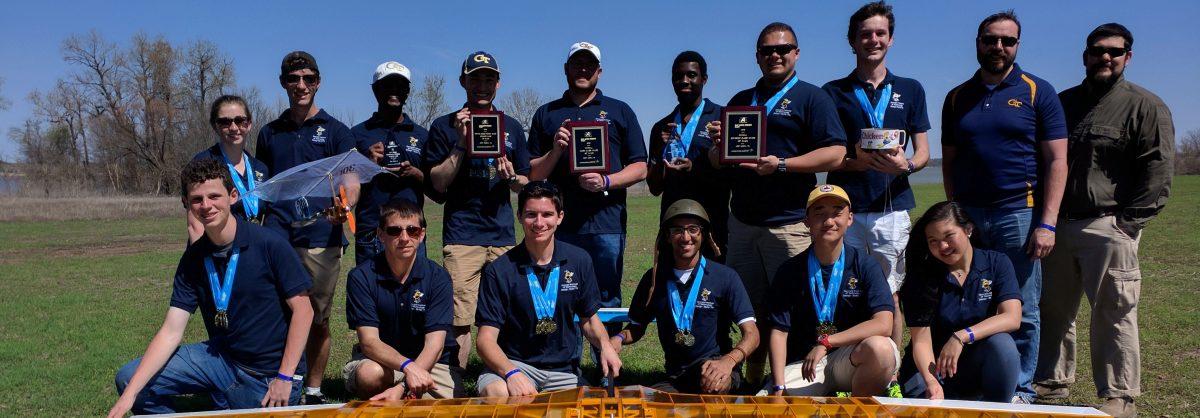
It was another winning year for a team of Aerospace Systems Design Lab (ASDL) students who put their talents on display at the Society of Automotive Engineers (SAE) 2016 Aero Design East Competition, held March 11-13 in Fort Worth, Texas.
This is the second year in a row that the Georgia Tech team has taken home the award for overall first place in the two classes in which they competed – Advanced and Micro.
“That’s an incredible feat right there, but I am not surprised,” said ASDL director and Regents Professor Dimitri Mavris. “These students are not scared off by a tough challenge. If anything, they seem to get more motivated by it."
Advising the two ASDL design teams were graduate teaching assistant Andrew Burrell and research engineer Carl Johnson.
“Winning one division is difficult, but to take home the top award for both entries two years in a row is an amazing accomplishment,” said Johnson.
In the Micro class the ASDL team’s “Chicken of the Sky” aircraft took first place overall and was recognized for hauling the second highest payload fraction. In the Advanced class the team’s “Buzzed Bomber” took first place overall, first place in its design report, and had the best payload drop at the competition.
The Chicken of the Sky is a maximum 1.65-pound hand-launched plane that was designed and fabricated over the course of six months using balsa wood, carbon-fiber, and ripstop nylon. As an entrant in the SAE Micro competition, it has to be designed such that it will fit into a travel tube that is six inches in diameter and only three inches long. The team accomplished this by using custom 3D-printed connectors. The shorter those tubes were, the better the entrant scored. Entrants were also judged by the weight of their payload, which was measured as a fraction of the overall weight.
"We used a tungsten payload, rather than steel, because it was more compact. That helped us keep things smaller. We had the shortest storage tube length by a factor of two," said Burrell.
The Buzzed Bomber is a much larger balsa wood, plywood and carbon fiber plane with a 140-inch wing span. As an entrant in the SAE Advanced competition, it has to carry a static payload while dropping sandbags at a target. The airplane is guided to the target by a ground station operator using telemetry and relaying commands to the pilot. The score is based on the drop accuracy and the amount of static payload carried.
"On the day of the competition, we had unpredictable winds which caused a lot of variability in the accuracy of the drops and also in the aircraft's flight," said Burrell.
"That's when we saw that a robust design trumps everything. We built a stable, reliable aircraft that was able to handle adverse environmental conditions."
The SAE competition is a much-revered rite of passage for aspiring engineers, who flock to the competitions held in the east and the west each spring. More than 20 teams from as far away as China competed for the top honors in each of three categories this year.